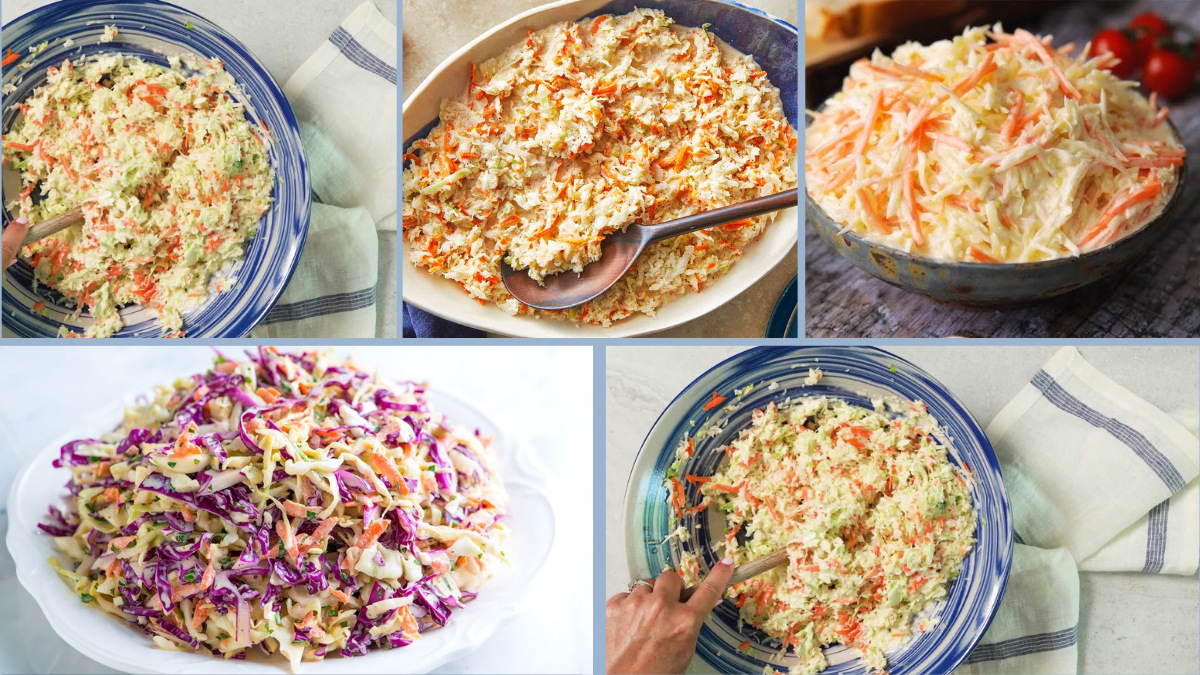Coleslaw is more than just a side dish. When made right, it becomes a creamy, refreshing companion to meals, especially in vegetarian cooking. However, many homemade coleslaws fall short—either they turn watery, taste flat, or lose their crunch. This article explores the five essential secrets to making the perfect creamy homemade coleslaw, all using 100% vegetarian ingredients.
Whether you’re making it for a picnic, family meal, or academic food study, understanding these tips will help you craft a coleslaw that is creamy, crunchy, and delicious—without any need for eggs, meat, or dairy (if desired).
Secret 1: Properly Prepare the Vegetables
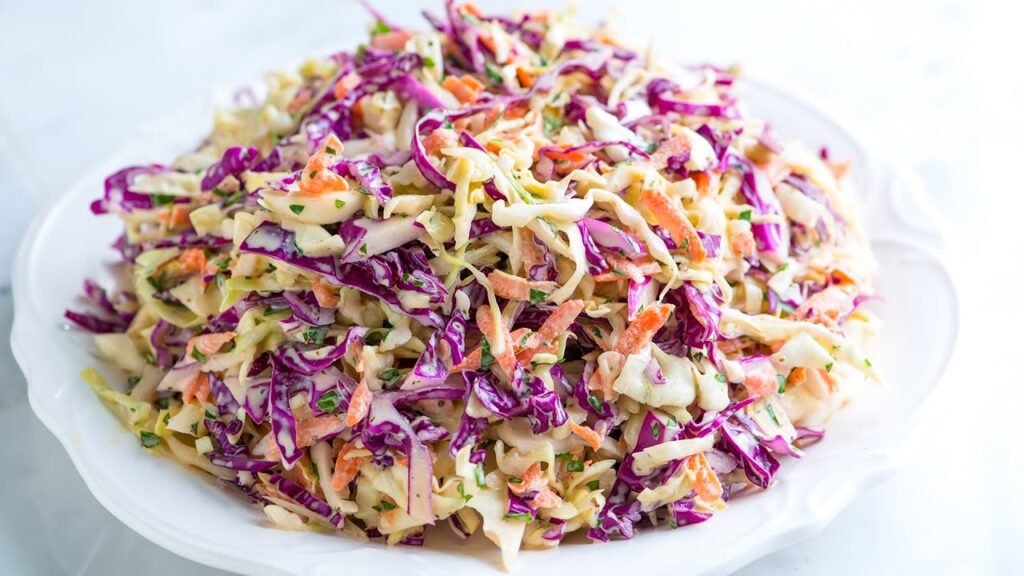
Moisture Control Is Key
The foundation of coleslaw is its vegetables—mainly cabbage and carrots. However, these ingredients naturally release water over time, which can dilute the dressing and ruin the texture.
Here’s what to do:
- Shred and Salt: Shred your cabbage finely (both green and red cabbage can be used for color and flavor). Sprinkle it with a light amount of salt and let it sit for 20–30 minutes. This draws out excess water.
- Drain and Squeeze: After resting, squeeze the cabbage using a clean kitchen towel or cheesecloth to remove the moisture.
- Dry Carrots Separately: Grate carrots finely but avoid salting them as they are naturally sweeter and less watery. Pat them dry with a paper towel if needed.
Why it works: Removing moisture prevents a soggy salad and allows the dressing to coat the vegetables better, giving a richer, creamier texture.
Secret 2: Build a Balanced, Creamy Dressing
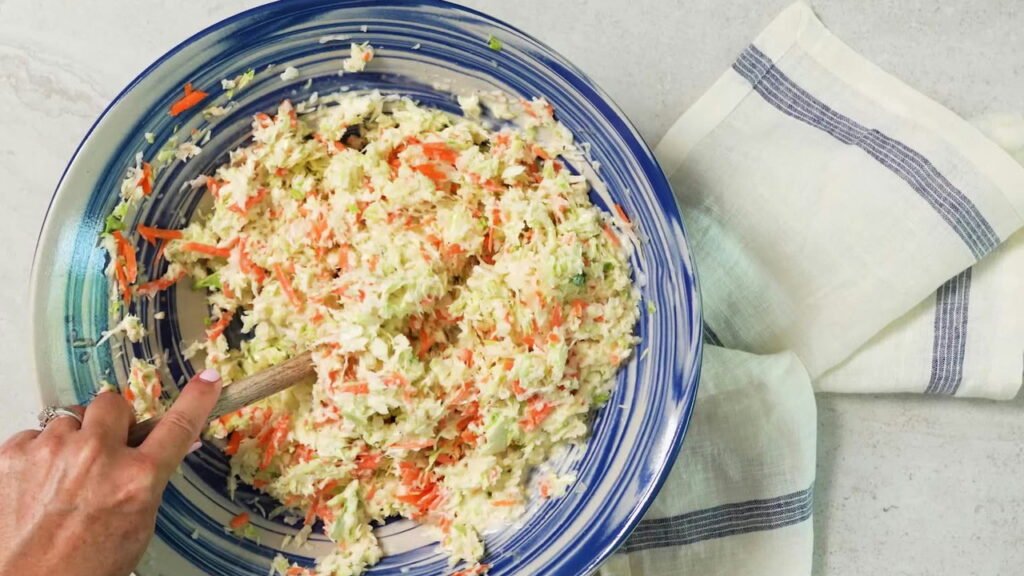
The heart of creamy coleslaw is its dressing. Most people default to mayonnaise alone, but that often results in an overly heavy or bland dressing. To elevate your coleslaw, build the flavor using a balanced blend of creaminess, acidity, sweetness, and spice.
Vegetarian Creamy Dressing Components:
| Ingredient | Function |
|---|---|
| Mayonnaise (or vegan mayo) | Creaminess |
| Greek yogurt / vegan yogurt | Tanginess and light texture |
| Apple cider vinegar / lemon juice | Acidity to cut the richness |
| Maple syrup / sugar | Sweetness to balance acidity |
| Dijon mustard | Depth and slight heat |
| Celery seeds or cumin | Earthy flavor and aroma |
| Salt & pepper | Essential seasoning |
Sample Ratio:
- ½ cup vegan mayonnaise
- ¼ cup Greek yogurt (or coconut yogurt for vegan)
- 1 tablespoon apple cider vinegar
- 1–2 teaspoons maple syrup or sugar
- 1 teaspoon Dijon mustard
- ½ teaspoon celery seeds
- Salt and pepper to taste
Tips:
- Whisk the dressing until completely smooth.
- Taste it on its own—if it tastes good alone, it will taste great with vegetables.
- Add a splash of lemon juice for extra freshness.
Why it works: A well-balanced dressing enhances the flavor of the vegetables without overpowering them. Combining different creamy bases reduces heaviness and creates a lighter, more enjoyable texture.
Secret 3: Cut Vegetables Uniformly for Better Texture
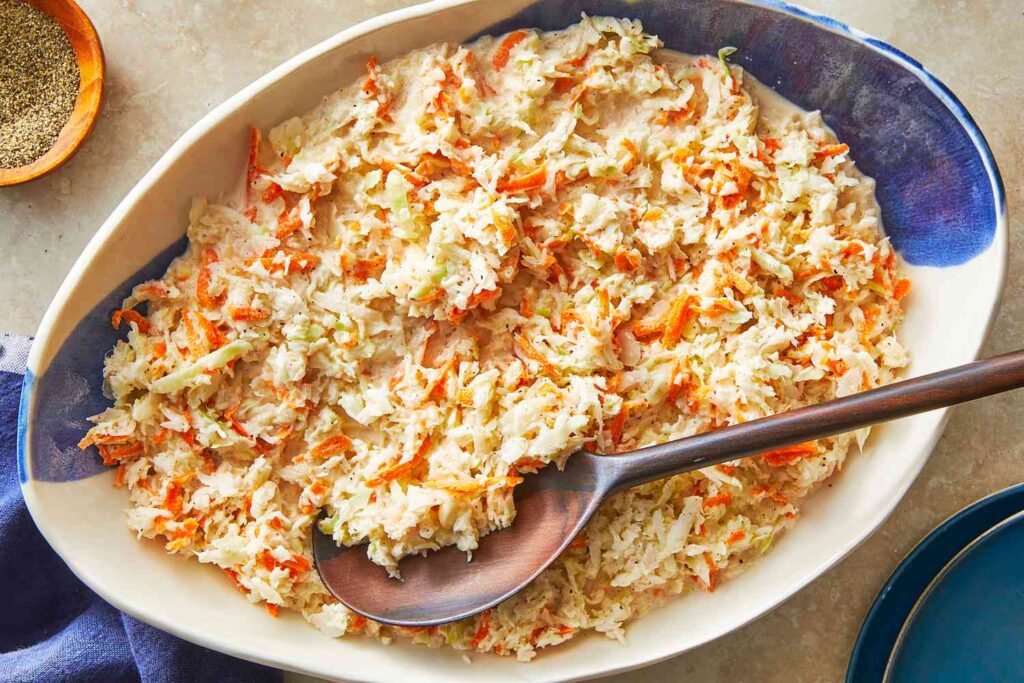
Precision Cutting = Better Mouthfeel
Texture is as important as flavor. Chunky coleslaw doesn’t allow the dressing to integrate well, while overly shredded vegetables can become mushy. The solution? Cut with intention.
Best Practices:
- Use a mandoline slicer or sharp knife to cut cabbage into thin ribbons.
- Slice the ribbons crosswise into bite-sized pieces.
- Grate carrots using the fine side of a box grater or a food processor.
- For extra flavor and color, thinly slice red onions or scallions.
Optional additions:
- Red cabbage – adds crunch and vibrant color
- Fennel – offers a subtle anise flavor
- Thin apple slices – for sweetness and freshness
Why it works: Uniform pieces ensure the dressing coats each bite evenly. Smaller, consistent cuts also help maintain a creamy texture without being watery or chunky.
Secret 4: Let It Rest – But Not Too Long
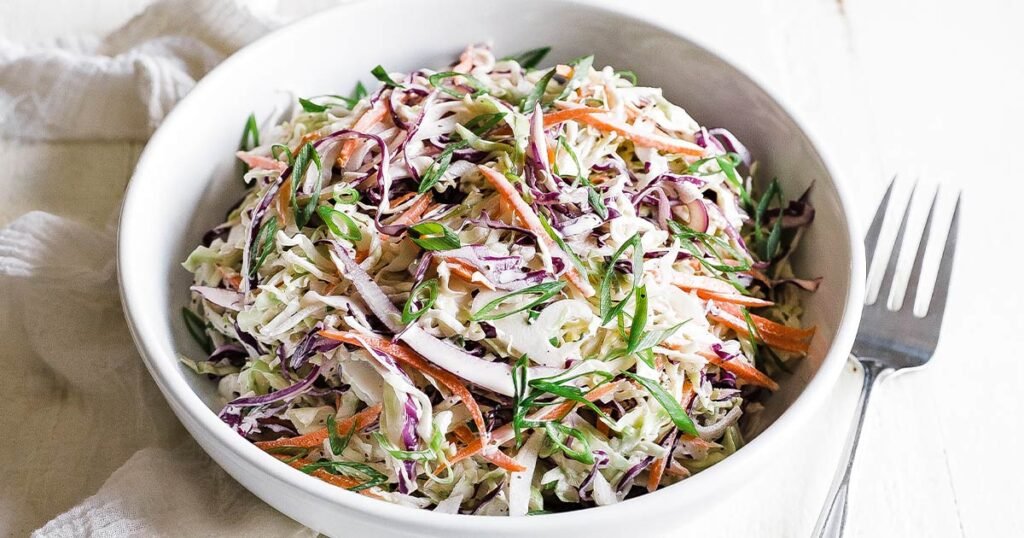
Time Enhances Flavor
One common mistake is serving coleslaw immediately after mixing. While it might taste fresh, it hasn’t had time for the flavors to develop. On the other hand, letting it sit too long can make it soggy.
Best practice:
- After mixing the coleslaw, cover it and let it rest in the refrigerator for 30 minutes to 1 hour.
- Before serving, give it a gentle toss and taste again.
- Consume within 24–48 hours for best texture.
Why it works: Resting allows the dressing to absorb into the vegetables, blending flavors while slightly softening the cabbage. But after 2 days, the cabbage may release more water, diluting the dressing.
Secret 5: Customize with Fresh Herbs and Crunch
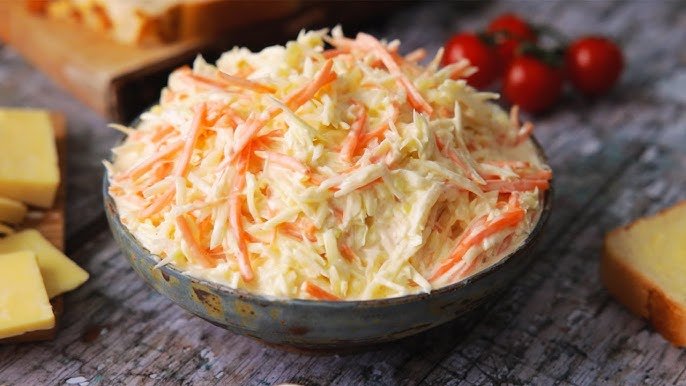
Final Touches Make All the Difference
The base of your coleslaw may be simple, but customizing it with herbs, seeds, or fruit can elevate it to something special. This not only enhances flavor and texture but also improves presentation.
Great Additions:
- Fresh parsley, mint, or dill – adds freshness
- Toasted sunflower seeds or pumpkin seeds – for crunch
- Chopped apple or raisins – add sweetness and balance
- Chili flakes or jalapeños – for a kick of spice
- Red or yellow bell peppers – for color and crunch
Optional (for vegan versions):
- Use vegan feta crumbles for a creamy, salty contrast
- Try cashew cream as part of the dressing for extra richness
Why it works: Add-ins provide contrast and complexity. Plus, the herbs and seeds enhance aroma and visual appeal.
Putting It All Together: Step-by-Step Recipe
Ingredients:
- 4 cups green cabbage (shredded)
- 1 cup red cabbage (optional)
- 1 cup grated carrots
- ½ red onion, thinly sliced
- Salt (for pre-salting vegetables)
Dressing:
- ½ cup vegan mayonnaise
- ¼ cup plain yogurt (or vegan yogurt)
- 1 tbsp apple cider vinegar
- 1–2 tsp sugar or maple syrup
- 1 tsp Dijon mustard
- ½ tsp celery seeds
- Salt and pepper to taste
Optional Add-ins:
- Chopped parsley
- Toasted pumpkin seeds
- Diced apple
- Raisins
Instructions:
- Prep vegetables: Shred cabbage and carrots. Lightly salt cabbage and let it sit for 30 minutes. Squeeze out the moisture.
- Make dressing: In a separate bowl, whisk together all dressing ingredients until smooth.
- Combine: Mix vegetables and dressing until evenly coated.
- Chill: Cover and refrigerate for 30–60 minutes.
- Adjust and garnish: Taste before serving. Add herbs, seeds, or fruit as desired.
Conclusion: Coleslaw Done Right
Making creamy homemade coleslaw doesn’t require animal products or complex ingredients. It requires attention to detail and a good understanding of the components:
- Drain your vegetables well
- Balance your dressing
- Cut with care
- Rest and blend flavors
- Finish with flair
These five secrets will transform your coleslaw into a rich, refreshing, and versatile dish that stands tall next to any main course. Perfect for vegetarian and vegan diets, it’s proof that plant-based food can be just as creamy and satisfying as traditional versions.
Further Study Suggestions for Thesis Expansion
If you’re writing a thesis around coleslaw or plant-based creamy salads, consider:
- Comparative tests: vegan mayo vs. traditional mayo
- Texture retention over time
- Sensory evaluation (taste panels)
- Nutritional analysis of creamy vegan dressing
- Cultural variations of cabbage-based salads
